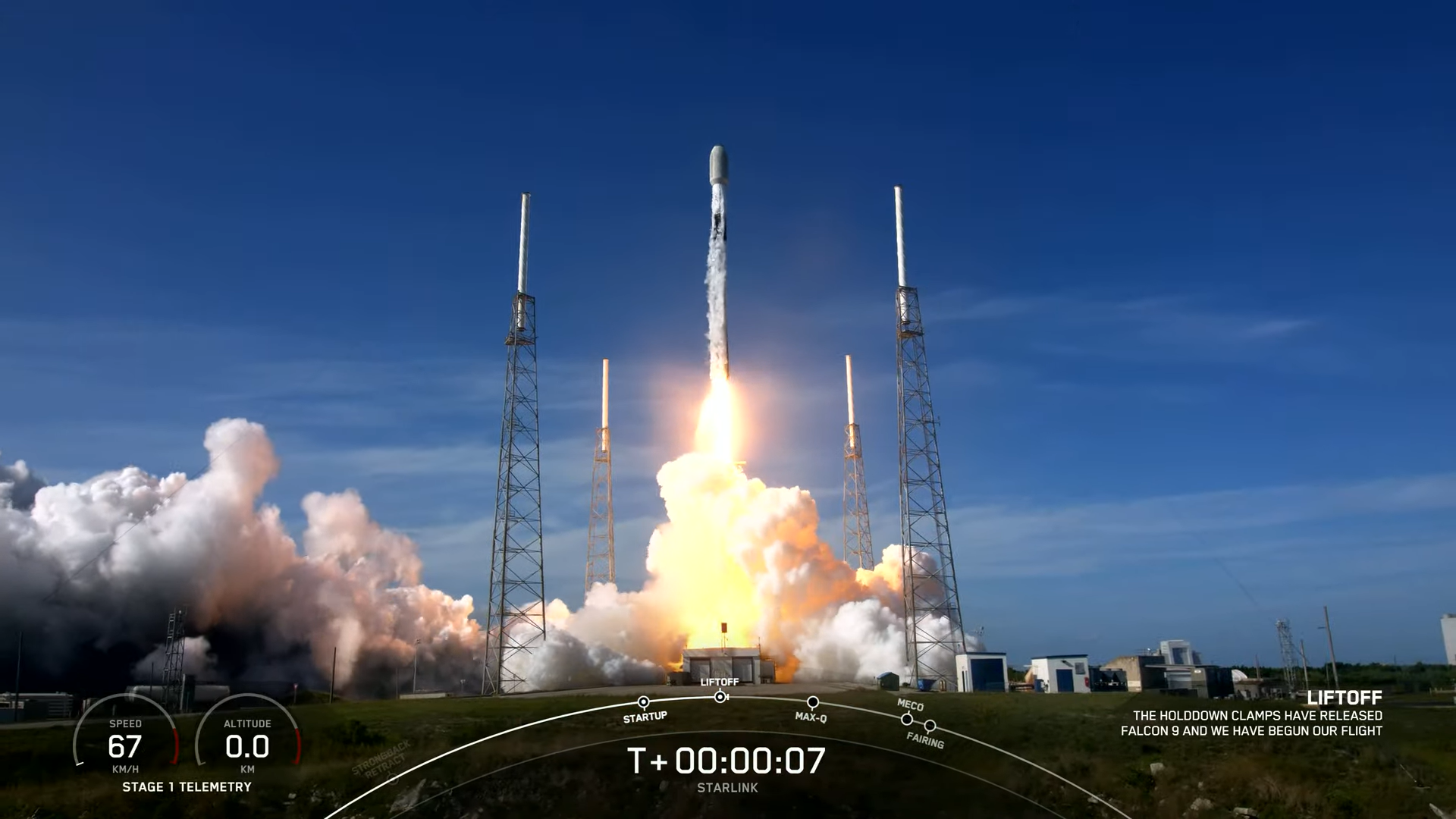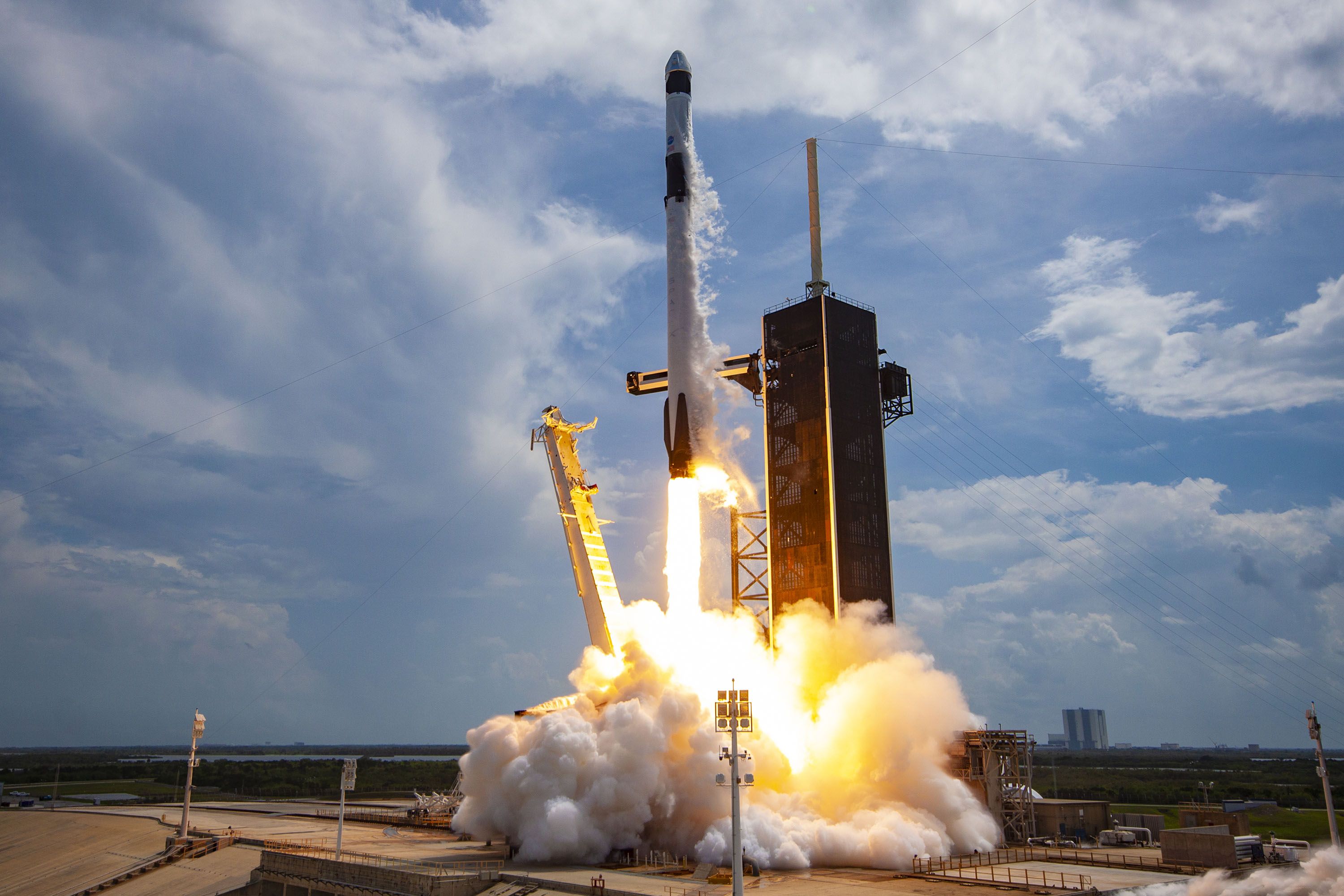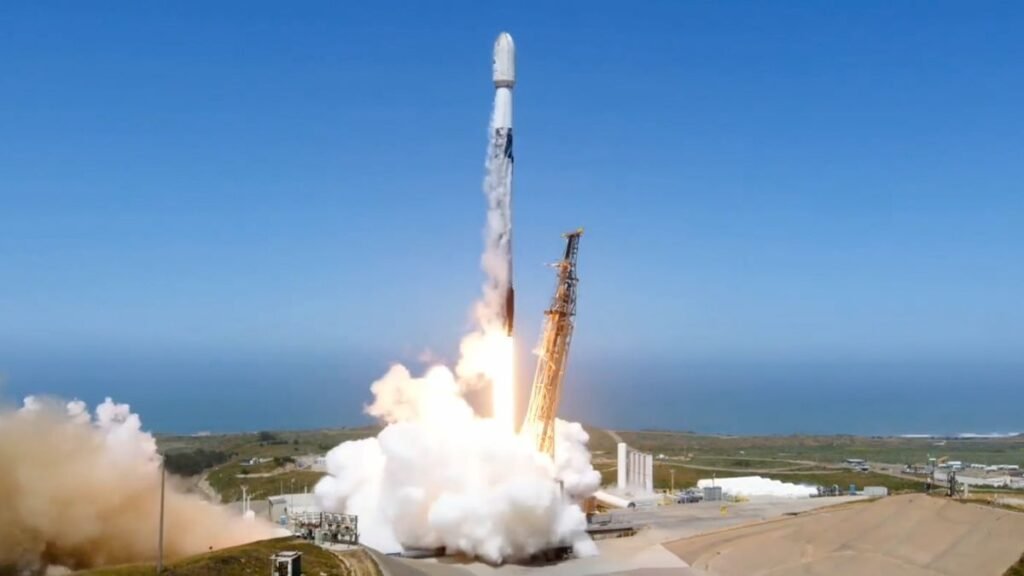SpaceX’s Falcon 9 rocket launches payloads into space efficiently. It has revolutionized space travel with its reusable design.
SpaceX’s Falcon 9 rocket is a game-changer in the aerospace industry. Its reusable first stage significantly reduces launch costs, making space more accessible. The rocket has a proven track record, with numerous successful missions to the International Space Station and satellite deployments.
The Falcon 9’s innovative design includes nine Merlin engines, providing powerful thrust. Its ability to return and land vertically sets it apart from other rockets. SpaceX continues to push the boundaries of what’s possible, aiming for Mars and beyond. The Falcon 9’s success paves the way for future space exploration and commercial ventures, bringing humanity closer to the stars.
The Genesis Of Spacex Falcon 9
The SpaceX Falcon 9 rocket has revolutionized space travel. Its journey from a mere concept to a record-breaking spacecraft is inspiring. This blog post delves into the early beginnings and the evolution of this extraordinary rocket.
Early Beginnings
SpaceX was founded by Elon Musk in 2002. His dream was to reduce space transportation costs. The company started with the Falcon 1 rocket. It faced many challenges during its early development.
Elon Musk invested his own money. He believed in the vision. The first three launches of Falcon 1 failed. Yet, the team persevered. The fourth launch succeeded in September 2008. This success laid the foundation for Falcon 9.
Evolution Of The Falcon 9
The Falcon 9 was designed to be reusable. This feature was revolutionary. The first successful flight was in June 2010. The rocket had nine Merlin engines. These engines provided the necessary thrust.
- 2012: First cargo mission to the International Space Station (ISS).
- 2015: First successful landing of the first stage on a drone ship.
- 2017: First reflight and landing of a used Falcon 9 rocket.
Each milestone showed the rocket’s reliability. The reusability feature reduced costs significantly. SpaceX’s ambitious goals did not stop there. They aimed for human spaceflight. In 2020, Falcon 9 launched astronauts to the ISS. This marked the return of human spaceflight from American soil.
Let’s look at some key stats:
| Year | Milestone |
|---|---|
| 2010 | First successful flight |
| 2012 | First cargo mission to ISS |
| 2015 | First stage landing on drone ship |
| 2017 | First reflight of used Falcon 9 |
| 2020 | First manned mission to ISS |

Credit: fox5sandiego.com
Technical Marvels Of The Falcon 9
The Falcon 9 rocket by SpaceX is a true technical marvel. It combines cutting-edge engineering and innovative design. This rocket has revolutionized space travel.
Engineering Breakthroughs
The Falcon 9 features several engineering breakthroughs. One key breakthrough is its nine-engine first stage. These engines provide powerful thrust and reliability.
Another breakthrough is the use of advanced materials. These materials make the rocket both lightweight and strong. This enhances its performance and safety.
The Falcon 9 also includes a sophisticated guidance system. This system ensures precise navigation and control during flight.
Reusable Technology
One of the most remarkable aspects of the Falcon 9 is its reusable technology. The first stage of the rocket can return to Earth and be used again.
This feature dramatically reduces the cost of space missions. It also makes space travel more sustainable.
The process involves a controlled landing of the first stage. It uses landing legs and grid fins for stability. Below is a summary of the reusable technology components:
| Component | Function |
|---|---|
| Landing Legs | Provide stability during landing |
| Grid Fins | Control descent direction |
| Heat Shield | Protects against re-entry heat |
Pre-launch Rituals
Before any SpaceX Falcon 9 rocket launch, there are crucial pre-launch rituals. These steps ensure the success and safety of the mission. Let’s dive into these vital processes.
Mission Planning
Mission planning is the first step in the pre-launch rituals. The team decides the mission’s objectives. They calculate the rocket’s trajectory. They also determine the payload’s requirements.
| Objective | Details |
|---|---|
| Trajectory | Calculate the rocket’s path |
| Payload | Determine requirements |
Rocket Inspection
The rocket inspection is a detailed process. Engineers check every part of the Falcon 9. They ensure no defects are present. This inspection includes the engines, fuel tanks, and control systems.
- Engines
- Fuel tanks
- Control systems
Final Checks
Final checks are the last step before launch. The team reviews all systems. They confirm the rocket is ready for liftoff. These checks are vital for mission success.
- Review all systems
- Confirm readiness
- Prepare for liftoff
The Countdown Begins
The anticipation is palpable as the Falcon 9 rocket prepares for launch. Spectators and engineers alike hold their breaths. The final countdown begins, marking the culmination of years of hard work.
T-minus 10 Seconds
The clock shows T-minus 10 seconds. Everyone watches intently. The tension is tangible. Inside the control room, engineers monitor every variable. Outside, spectators gaze up at the rocket. The announcer’s voice breaks the silence, calling out the countdown milestones.
Engine Ignition
Engines ignite at T-minus 3 seconds. Flames burst from the base of the rocket. The ground trembles as the engines roar to life. The Falcon 9’s engines reach full thrust, ready to lift.
Liftoff
The moment arrives. The announcer’s voice rings out: “Liftoff!” The Falcon 9 ascends majestically, leaving a trail of fire. Cheers erupt from the crowd. The rocket climbs higher, accelerating into the sky. The journey to space begins.
Key Milestones In Orbit
The SpaceX Falcon 9 Rocket launch is a marvel of modern engineering. This section will delve into the Key Milestones in Orbit that make this mission extraordinary. Each milestone marks a critical phase in the mission’s success.
Stage Separation
The first key milestone is Stage Separation. After the initial launch, the rocket’s first stage separates from the second stage. This happens a few minutes into the flight. The first stage then returns to Earth for a landing. This is a key feature of Falcon 9’s reusability.
Meanwhile, the second stage continues its journey into orbit. This stage carries the payload to its designated orbit. This separation is critical for mission success.
Dragon Deployment
The next milestone is the Dragon Deployment. After reaching the target orbit, the Dragon spacecraft detaches from the second stage. This marks the beginning of its mission in space.
The Dragon spacecraft is used for various missions. These include carrying supplies to the International Space Station (ISS). Its deployment is a key step in ensuring the payload reaches its destination.
Here is a summary of these key milestones:
| Milestone | Description |
|---|---|
| Stage Separation | The first stage separates and returns to Earth. |
| Dragon Deployment | The Dragon spacecraft detaches and begins its mission. |
These milestones highlight the precision and innovation of the Falcon 9 rocket. Each step is crucial for mission success.
The Return Journey
The journey of SpaceX’s Falcon 9 does not end after reaching space. The return journey is an important part of the mission. This phase showcases the rocket’s engineering brilliance.
Re-entry
Re-entry marks the Falcon 9’s return from space to Earth. The rocket must withstand extreme heat during this phase. Engineers designed a heat shield to protect it.
Thrusters and grid fins help guide the Falcon 9 during re-entry. These components ensure the rocket stays on course. The rocket must slow down to land safely.
Landing Zones
Falcon 9 can land in two types of zones:
- Ground Landing Zones
- Droneships
Ground Landing Zones are on solid ground. These are near the launch site. Droneships are floating platforms in the ocean. They allow for landings far from the coast.
Rocket Recovery
After landing, the rocket is carefully recovered. This process ensures the rocket can be reused. Reusing rockets saves money and resources.
Engineers inspect the Falcon 9 after recovery. They check for any damage. Repairs and maintenance are done if needed.
The recovery team plays a crucial role. They ensure the rocket is safe and ready for the next mission. This team is vital for SpaceX’s success.
| Phase | Description |
|---|---|
| Re-entry | The rocket returns to Earth, facing extreme heat. |
| Landing Zones | The rocket lands on ground or a droneship. |
| Rocket Recovery | The rocket is inspected and repaired for reuse. |
Impact On Space Exploration
The SpaceX Falcon 9 rocket launch has revolutionized space exploration. It has brought significant changes, making space more accessible and affordable. This section explores how Falcon 9 impacts space exploration.
Cost Reduction
Falcon 9 has significantly reduced the cost of space missions. Traditional space launches were expensive, often reaching billions of dollars. Falcon 9’s reusable design lowers costs dramatically.
- Reusable first stage
- Lower manufacturing costs
- Efficient fuel usage
A table below shows the cost comparison:
| Traditional Rockets | Falcon 9 |
|---|---|
| $500 million | $62 million |
Commercial Space Travel
Commercial space travel is now a reality. Falcon 9 has paved the way for private companies to explore space. This opens up new possibilities for tourism and research.
- Space tourism
- Private space stations
- Scientific research
Companies like SpaceX and Blue Origin are leading the charge.
Future Missions
Falcon 9 is just the beginning. Future missions include exploring Mars and beyond. SpaceX plans to use Falcon 9 for ambitious projects.
- Mars colonization
- Interplanetary travel
- Deep space exploration
The future of space exploration looks bright with Falcon 9.

Credit: www.space.com
Personal Accounts
The SpaceX Falcon 9 rocket launch is a historic event. Personal accounts provide a unique perspective. These stories come from astronauts, engineers, and viewers.
Astronaut Experiences
Astronauts share their thrilling experiences. They describe the intense feelings during takeoff. The vibrations and noise are overwhelming. They feel a mix of excitement and fear.
One astronaut said, “The view from space is breathtaking.” They love seeing Earth from above. It’s a life-changing moment. They feel small but connected to the universe.
Engineering Insights
Engineers give us a behind-the-scenes look. They talk about the hard work and dedication. Many hours go into building the Falcon 9. It’s a complex machine with many parts.
- Rocket engines
- Fuel systems
- Navigation technology
Engineers feel proud of their work. One engineer mentioned, “Seeing the launch is a reward for us.” They appreciate the teamwork and innovation. They love solving problems and making history.
Viewer Impressions
Viewers share their excitement too. Many watch the launch live. They gather with friends and family. The countdown adds to the thrill.
One viewer said, “It’s like watching a movie, but real.” They feel inspired by the achievement. They see it as a step toward the future.
| Viewer | Impression |
|---|---|
| John Doe | Amazing and inspiring |
| Jane Smith | Thrilling and hopeful |
These personal accounts make the Falcon 9 launch more special. They show the human side of space exploration.

Credit: www.popularmechanics.com
Frequently Asked Questions
What Is The Falcon 9 Rocket?
The Falcon 9 is a reusable rocket developed by SpaceX. It is designed for reliable and safe transportation of satellites and cargo.
How Many Times Can Falcon 9 Be Reused?
The Falcon 9 first stage is designed to be reusable up to 10 times. This significantly reduces the cost of space access.
What Is The Payload Capacity Of Falcon 9?
The Falcon 9 can carry up to 22,800 kilograms to low Earth orbit. It can also transport up to 8,300 kilograms to geostationary transfer orbit.
How Does Falcon 9 Land?
The Falcon 9 lands vertically using its own engines. This is achieved through precise engine burns and landing legs deployment.
Conclusion
The SpaceX Falcon 9 rocket launch represents a significant leap in space exploration. This achievement highlights human ingenuity and determination. With each mission, SpaceX brings us closer to new frontiers. The Falcon 9’s success inspires future innovations and possibilities in space travel.
Stay tuned for more groundbreaking advancements from SpaceX.



